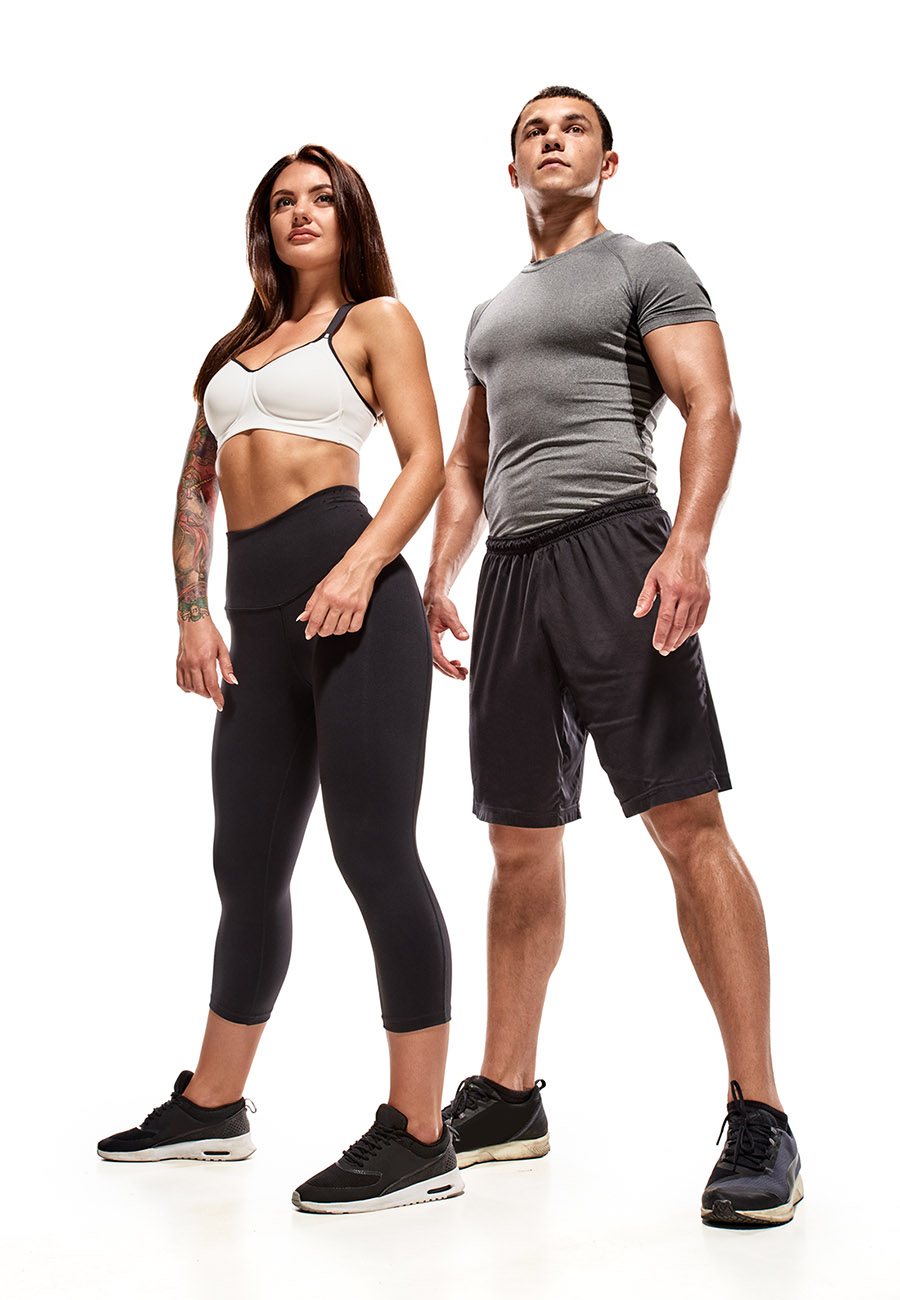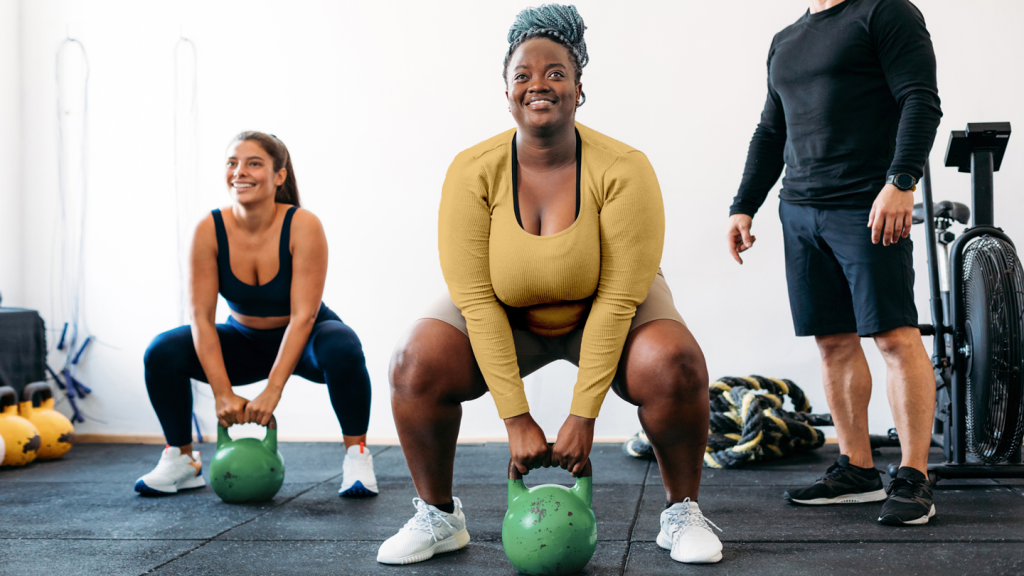Gym Fitness
1.1 Physical Health Benefits The Benefits of Gym Fitness
- The Benefits of Gym Fitness Cardiovascular Health: Regular exercise strengthens the heart, reduces blood pressure, and improves circulation.
- Muscle Strength and Endurance: Weight training builds muscle mass, increases strength, and enhances endurance.
- Flexibility and Mobility: Stretching and flexibility exercises prevent injuries and improve overall movement.
- Weight Management: Consistent workouts help manage weight by burning calories and increasing metabolism.
1.2 Mental Health Benefits
- Stress Relief: Exercise releases endorphins, reducing stress and promoting a sense of well-being.
- Improved Sleep: Physical activity regulates sleep patterns, leading to better rest and recovery.
- Enhanced Mood: Regular exercise can alleviate symptoms of depression and anxiety.
- Boosted Confidence: Achieving fitness goals improves self-esteem and body image.
2. Setting Your Fitness Goals
2.1 Identifying Your Objectives
- Short-Term Goals: Set achievable goals, such as losing a certain amount of weight in a month.
- Long-Term Goals: Aim for sustainable changes, like building a consistent exercise routine or preparing for a marathon.
2.2 SMART Goals
- Specific: Clearly define your goals (e.g., “I want to lose 10 pounds in 3 months”).
- Measurable: Ensure your goals are trackable.
- Achievable: Set realistic expectations.
- Relevant: Align goals with your overall fitness aspirations.
- Time-Bound: Establish a timeline to achieve your goals.
3. Creating an Effective Workout Routine
3.1 Understanding Different Workout Types
- Cardiovascular Exercises: Running, cycling, and swimming to improve heart health and burn calories.
- Strength Training: Lifting weights or using resistance bands to build muscle.
- Flexibility Training: Yoga and stretching exercises to enhance mobility.
- High-Intensity Interval Training (HIIT): Short bursts of intense exercise followed by rest.
3.2 Structuring Your Routine
- Warm-Up: 5-10 minutes of light cardio to prepare your body.
- Main Workout: 30-60 minutes focusing on specific goals (strength, cardio, etc.).
- Cool Down: 5-10 minutes of stretching to aid recovery.
- Frequency: Aim for at least 150 minutes of moderate-intensity exercise per week, as recommended by health guidelines.
3.3 Progression and Variation
- Progressive Overload: Gradually increase the intensity of your workouts to avoid plateaus.
- Variety: Mix different types of exercises to keep your routine interesting and work various muscle groups.
4. Essential Gym Equipment
4.1 Cardio Machines
- Treadmill: For walking, jogging, or running.
- Elliptical Trainer: Low-impact cardio workout.
- Stationary Bike: Cycling indoors with adjustable resistance.
- Rowing Machine: Full-body workout focusing on cardiovascular health.
4.2 Strength Training Equipment
- Free Weights: Dumbbells, barbells, and kettlebells for versatile strength exercises.
- Resistance Machines: Target specific muscle groups safely.
- Cable Machines: Provide constant resistance through a range of motion.
- Smith Machine: Assisted barbell exercises for beginners.
4.3 Flexibility and Core Equipment
- Yoga Mats: For stretching and floor exercises.
- Stability Balls: Improve balance and core strength.
- Foam Rollers: Aid in muscle recovery and flexibility.
5. Nutrition and Hydration
5.1 Importance of Nutrition
- Macronutrients: Balance carbohydrates, proteins, and fats for energy and muscle repair.
- Micronutrients: Vitamins and minerals are essential for overall health and performance.
5.2 Pre-Workout Nutrition
- Carbohydrates: Provide energy for intense workouts.
- Proteins: Support muscle maintenance.
- Timing: Eat 1-2 hours before exercising for optimal energy levels.
5.3 Post-Workout Nutrition
- Proteins: Aid in muscle recovery and growth.
- Carbohydrates: Replenish glycogen stores.
- Hydration: Replace fluids lost through sweat.
5.4 Hydration Strategies
- Water Intake: Aim for at least 8 cups of water daily, more if you’re exercising intensely.
- Electrolytes: Consume beverages with electrolytes during long, intense workouts.
6. Overcoming Common Challenges
6.1 Staying Motivated
- Set Realistic Goals: Avoid setting goals that are too ambitious.
- Track Progress: Use apps or journals to monitor improvements.
- Find a Workout Buddy: Exercising with a friend can increase accountability.
- Reward Yourself: Treat yourself for reaching milestones.
6.2 Dealing with Plateaus
- Change Routine: Introduce new exercises or increase intensity.
- Rest and Recovery: Ensure you’re getting adequate rest.
- Nutrition Check: Reevaluate your diet for any deficiencies.
6.3 Avoiding Injuries
- Proper Form: Learn and maintain correct exercise techniques.
- Warm-Up and Cool Down: Prepare your body for exercise and aid recovery.
- Listen to Your Body: Avoid pushing through pain.
7. The Role of Rest and Recovery
7.1 Importance of Rest Days
- Muscle Repair: Muscles need time to recover and grow.
- Prevent Burnout: Rest prevents physical and mental exhaustion.
- Improve Performance: Adequate rest enhances overall performance.
7.2 Active Recovery
- Light Activities: Engage in low-intensity activities like walking or yoga.
- Stretching: Helps maintain flexibility and reduce muscle tightness.
7.3 Sleep
- Sleep Quality: Aim for 7-9 hours of quality sleep per night.
- Impact on Performance: Proper sleep enhances recovery, mental focus, and physical performance.
8. Gym Etiquette and Safety
8.1 Basic Gym Etiquette
- Respect Others: Share equipment and space.
- Clean Up: Wipe down equipment after use.
- Punctuality: Be on time for classes or appointments.
8.2 Safety Measures
- Proper Attire: Wear suitable clothing and footwear.
- Hydrate: Keep water handy to stay hydrated.
- Use Equipment Correctly: Follow instructions and ask for help if needed.
9. The Benefits of Gym Fitness Mental Health and Fitness
9.1 The Connection Between Exercise and Mental Health
- Mood Enhancement: Exercise stimulates the production of endorphins.
- Stress Reduction: Physical activity reduces stress levels.
- Cognitive Function: Regular exercise improves brain health and cognitive function.
9.2 Mindfulness and Meditation
- Incorporating Mindfulness: Practice mindfulness during workouts to stay focused.
- Meditation: Integrate meditation to enhance mental well-being and recovery.
Conclusion
The Benefits of Gym Fitness Embarking on a fitness journey in the gym is a transformative experience that encompasses physical health, mental well-being, and personal growth. By understanding the benefits, setting clear goals, creating effective routines, and maintaining proper nutrition and recovery strategies, you can achieve and sustain your fitness aspirations. Remember, consistency and dedication are key to long-term success. Stay motivated, stay active, and enjoy the journey to a healthier, happier you.


